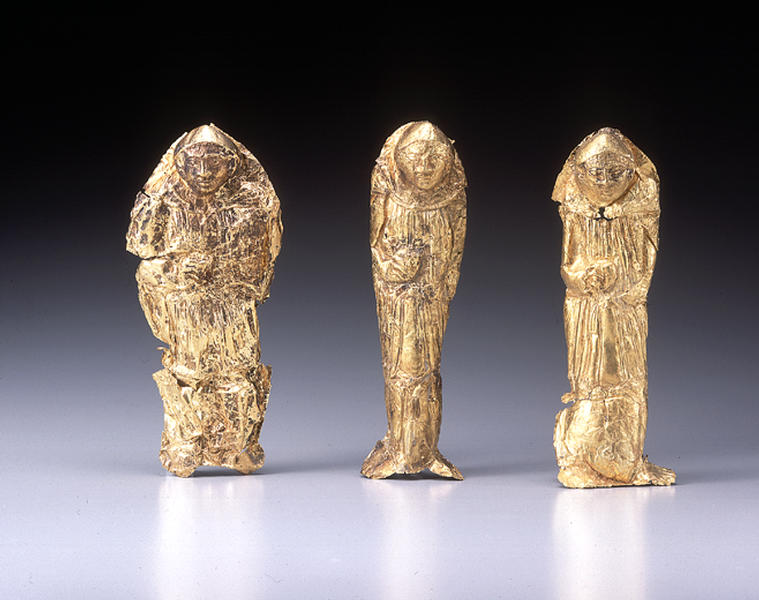神官押出小像
- 紀元前2-紀元前1世紀頃
- 金板
- H-14.2
解説(古代バクトリア遺宝展)
前2―前1世紀頃
金板
a:高14.2 cm 幅4.9 cm b:高14.0 cm 幅4.0 cm c:高14.0 cm 幅6.1 cm
これらは金の薄板を打ち出して神官の姿を作っているが、膝までの長さの衣を着けベルトを締めて、その緒を前に垂らしている。彼らは頭に密着して先端の尖ったフードを着け、右手にバルサムではなく杯を持っている。膝から下はズボンと見られるが、皺がないことから脚に密着したものであり、そこから裸足の足先を出している。これらの神官の顔立ちは、長い鼻と小鼻が横に広く開き厚い唇をもった東イラン系の特徴を示している。これはヘレニズム末期からヘレニズムの後の時代に相当すると考えられる。
Catalogue Entry
ca. 2nd‐1st century B.C.
Gold sheet
(a) H. 14.2 cm, W. 4.9 cm (b) H. 14.0 cm, W. 4.0 cm c H. 14.0 cm, W. 6.1 cm
These figures of priests were hammered from thin sheets of gold. They wear knee-length, belted garments whose ends hang to the front of the figure. Their heads are fitted with closely bound hoods with front peaks, and they hold cups, not barsoms, in their right hands. Their lower legs, from knee down, are enclosed in trousers, and the lack of wrinkles indicates that these pants were tight-fitting. Their feet are bare and protrude from the pants. The faces of these priests are characterized by eastern Iranian features, such as their long noses, wide open nostrils and thick lips. These figures are thought to date from the end of the Hellenistic period to the post-Hellenistic period.
蛇小像
